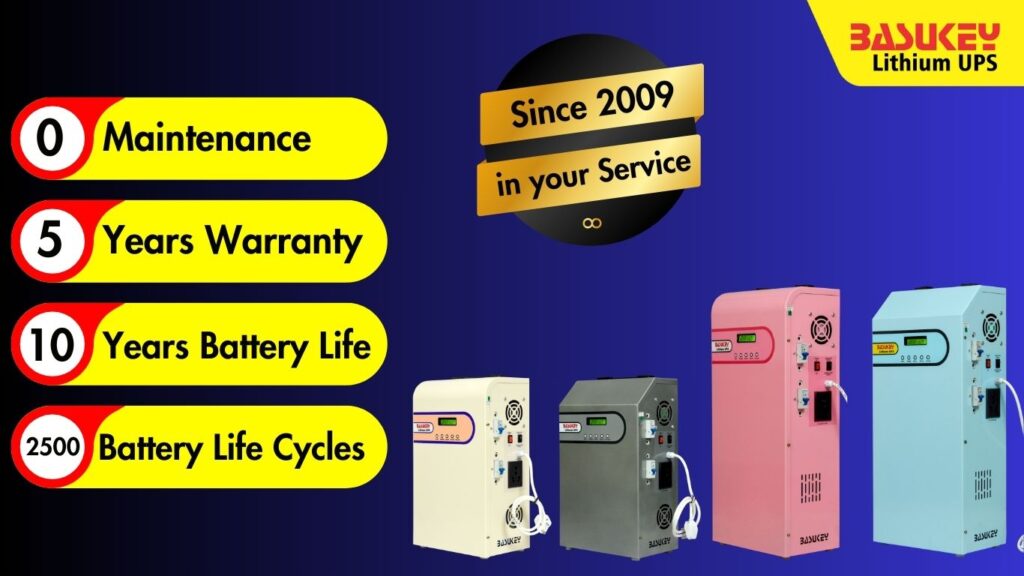Reducing Carbon Footprint with Lithium-Ion Energy Storage
Reducing Carbon Footprint with Lithium-ion Energy Storage. As the world pushes toward carbon neutrality, energy storage solutions play a vital role in reducing emissions and enhancing energy efficiency. Traditional power backup and storage systems—such as diesel generators and lead-acid batteries—contribute to carbon emissions and environmental degradation. Lithium-ion energy storage is emerging as a sustainable alternative, enabling industries, businesses, and households to cut their carbon footprint while improving energy reliability and efficiency.
How Lithium-Ion Energy Storage Reduces Carbon Emissions
1. Enabling Renewable Energy Adoption
Solar and wind energy are clean but intermittent, meaning they don’t generate power consistently. Lithium-ion storage systems capture excess renewable energy and store it for later use, ensuring a constant, zero-emission power supply. Impact on Carbon Footprint:
– Reduces reliance on fossil fuels by storing clean energy.
– Maximizes renewable energy utilization by eliminating waste.
– Enables off-grid and hybrid energy systems, minimizing dependence on coal or gas power plants.

2. Replacing Diesel Generators for Backup Power
Diesel generators are widely used for power backup but are notorious for their high carbon emissions, noise pollution, and fuel dependency.
Comparing Emissions:
- A typical diesel generator emits 2.7 kg of CO₂ per liter of diesel consumed.
- A lithium-ion energy storage system emits zero operational CO₂ when charged from renewables.
Impact on Carbon Footprint:
– Eliminates diesel fuel consumption and emissions.
– Reduces maintenance and operational costs.
– Provides a silent, eco-friendly alternative to noisy generators.
3. Grid Stabilization & Peak Load Reduction
Power grids rely on coal and gas plants to meet peak demand, leading to higher emissions. Lithium-ion storage helps by:
– Storing energy during low-demand periods and supplying it when demand spikes.
– Reducing reliance on fossil fuel-based peaker plants.
– Enhancing grid stability, reducing transmission losses and inefficiencies.
Impact on Carbon Footprint:
– Lowers the need for fossil-fuel-based power plants.
– Improves energy efficiency in smart grids and microgrids.
– Supports demand-side energy management, reducing overall electricity consumption.
4. Enabling Electrification of Transportation
Electric vehicles (EVs) are a key solution for reducing transportation emissions, but they need efficient energy storage for charging infrastructure and grid support.
Lithium-ion storage supports EV adoption by:
– Providing fast-charging stations powered by renewables.
– Reducing grid strain by storing and distributing power efficiently.
– Supporting vehicle-to-grid (V2G) systems, where EVs act as mobile energy storage units.
Impact on Carbon Footprint:
– Lowers transportation-related CO₂ emissions.
– Encourages the shift from fossil fuel-powered vehicles to EVs.
– Reduces the need for coal-based electricity to charge EVs.
5. Reducing Electronic Waste with Longer Battery Lifespan
Traditional lead-acid batteries need frequent replacements (3-5 years), contributing to electronic waste (e-waste) and environmental pollution.
Lithium-ion batteries offer:
– Lifespan of 10-15 years, reducing replacement frequency.
– Higher efficiency (95-98%), leading to less energy waste.
– Recyclability, reducing landfill waste and toxic material leakage.
Impact on Carbon Footprint:
– Cuts down manufacturing and disposal emissions.
– Reduces toxic waste from lead and acid leakage.
– Encourages circular economy practices through battery recycling.
Industries Benefiting from Lithium-Ion Energy Storage for Sustainability
I. Commercial & Industrial – Reducing energy costs and emissions with on-site energy storage.
II. Data Centers – Minimizing diesel generator usage for backup power.
III. Healthcare & Hospitals – Ensuring clean and reliable power for critical operations.
IV. Smart Cities – Powering urban infrastructure with sustainable storage solutions.
V. Renewable Energy Providers – Improving solar and wind power efficiency with advanced storage.
The Future of Lithium-Ion Energy Storage in Decarbonization
As governments and corporations accelerate the shift toward clean energy, lithium-ion storage systems will play an even bigger role in:
A. Decarbonizing industries and critical infrastructure.
B. Supporting 24/7 renewable energy usage.
C. Reducing reliance on fossil fuels for power generation and transportation.
D. Advancing smart grids and decentralized energy systems.
Conclusion
Lithium-ion energy storage is a key enabler of a low-carbon future. By supporting renewable energy adoption, eliminating fossil fuel-based backups, improving grid efficiency, and extending battery lifespan, these systems significantly reduce global carbon footprints.
